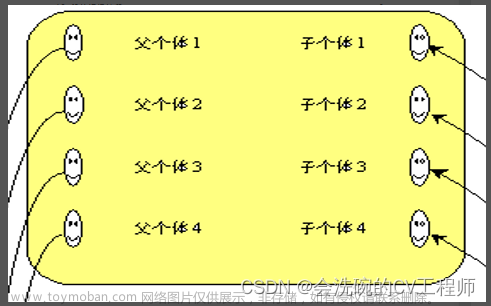「程序员必须掌握的算法」字典树「上篇」
前言: 在计算机科学中,字典树(Trie)是一种有序树,用于保存关联数组(有时我们称之为“映射”或“字典”)。与二叉查找树不同,键不是直接保存在节点中,而是由节点在树中的位置决定。字典树的优势在于能够非常快速地查找、插入和删除字符串。
本篇文章将介绍字典树的基本概念、构建方法以及应用场景,并通过三道例题由浅入深地说明字典树的应用。
基本概念
字典树是一种树形结构,典型应用是用于统计和排序大量的字符串(但不限于字符串)。它经常被搜索引擎系统用于文本词频统计。
以下是字典树的基本概念:
- 根节点不包含字符,除根节点外每一个节点都只包含一个字符;
- 从根节点到某一节点,路径上经过的字符连接起来,为该节点对应的字符串;
- 每个节点的所有子节点包含的字符都不相同。
构建方法
一个字典树的典型操作是插入一个字符串,我们可以按照以下步骤插入一个字符串:
- 从根节点开始,找到第一个字符所在的节点;
- 如果找到对应的节点,继续寻找下一个字符;
- 如果找不到对应的节点,创建一个新节点,将其链接到前一个节点的对应指针上,并继续寻找下一个字符。
以下是Java代码实现:
class TrieNode {
public boolean isWord;
public TrieNode[] children = new TrieNode[26];
}
class Trie {
private TrieNode root;
public Trie() {
root = new TrieNode();
}
/** Inserts a word into the trie. */
public void insert(String word) {
TrieNode node = root;
for (char c : word.toCharArray()) {
if (node.children[c - 'a'] == null) {
node.children[c - 'a'] = new TrieNode();
}
node = node.children[c - 'a'];
}
node.isWord = true;
}
/** Returns if the word is in the trie. */
public boolean search(String word) {
TrieNode node = root;
for (char c : word.toCharArray()) {
if (node.children[c - 'a'] == null) {
return false;
}
node = node.children[c - 'a'];
}
return node.isWord;
}
/** Returns if there is any word in the trie that starts with the given prefix. */
public boolean startsWith(String prefix) {
TrieNode node = root;
for (char c : prefix.toCharArray()) {
if (node.children[c - 'a'] == null) {
return false;
}
node = node.children[c - 'a'];
}
return true;
}
}
应用场景
字典树最常见的应用场景是字符串相关的问题,以下是三道例题由浅入深地说明字典树的应用:
例题一:查找单词
给定一个单词集合(如下所示),查找一个单词是否在集合中出现。
["hello", "world", "leetcode"]
以下是Java代码实现:
class Solution {
public boolean findWord(String[] words, String target) {
Trie trie = new Trie();
for (String word : words) {
trie.insert(word);
}
return trie.search(target);
}
}
例题二:查找单词前缀
给定一个单词集合(如下所示),查找一个单词是否是集合中的某个单词的前缀。
["hello", "world", "leetcode"]
以下是Java代码实现:
class Solution {
public boolean findPrefix(String[] words, String target) {
Trie trie = new Trie();
for (String word : words) {
trie.insert(word);
}
return trie.startsWith(target);
}
}
例题三:计算单词前缀数量
给定一个单词集合(如下所示),计算以某个前缀开头的单词数量。
["hello", "world", "leetcode"]
以下是Java代码实现:
class TrieNode {
public int count;
public TrieNode[] children = new TrieNode[26];
}
class Trie {
private TrieNode root;
public Trie() {
root = new TrieNode();
}
public void insert(String word) {
TrieNode node = root;
for (char c : word.toCharArray()) {
if (node.children[c - 'a'] == null) {
node.children[c - 'a'] = new TrieNode();
}
node = node.children[c - 'a'];
node.count++;
}
}
public int countPrefix(String prefix) {
TrieNode node = root;
for (char c : prefix.toCharArray()) {
if (node.children[c - 'a'] == null) {
return 0;
}
node = node.children[c - 'a'];
}
return node.count;
}
}
class Solution {
public int countPrefix(String[] words, String prefix) {
Trie trie = new Trie();
for (String word : words) {
trie.insert(word);
}
return trie.countPrefix(prefix);
}
}
在上述代码中,我们通过 countPrefix 方法来计算以某个前缀开头的单词数量。文章来源:https://www.toymoban.com/news/detail-724656.html
总结
本篇文章介绍了字典树的基本概念、构建方法和应用场景,并提供了三道例题由浅入深地说明字典树的应用。在实际开发中,字典树是一种非常常用的数据结构,能够帮助我们解决各种字符串相关的问题。文章来源地址https://www.toymoban.com/news/detail-724656.html
到了这里,关于「程序员必须掌握的算法」字典树「上篇」的文章就介绍完了。如果您还想了解更多内容,请在右上角搜索TOY模板网以前的文章或继续浏览下面的相关文章,希望大家以后多多支持TOY模板网!














